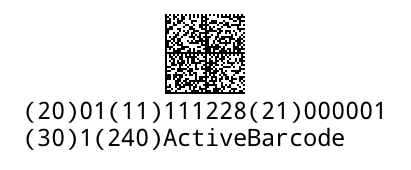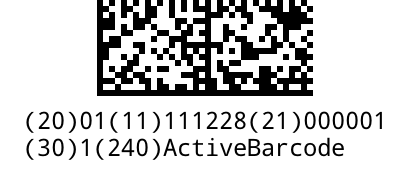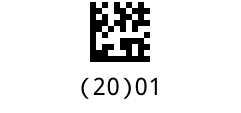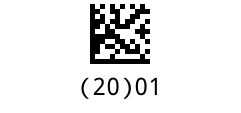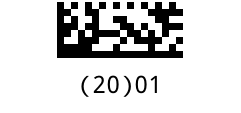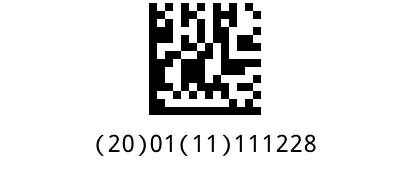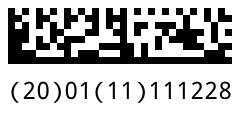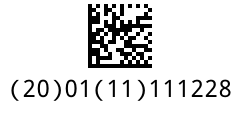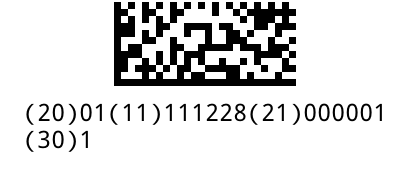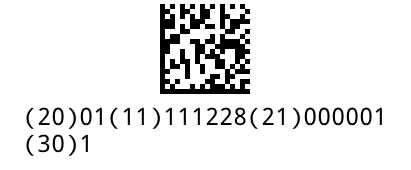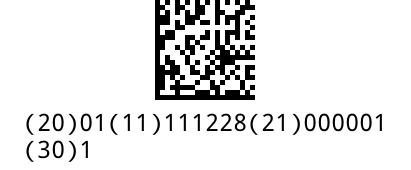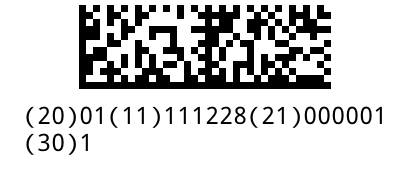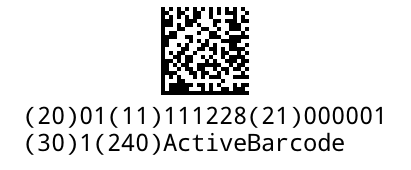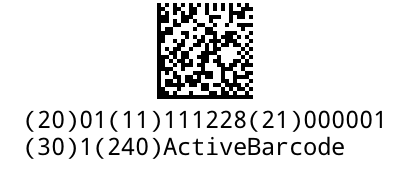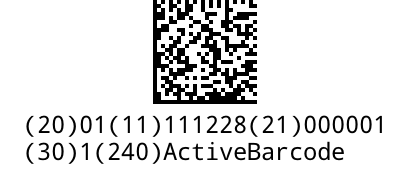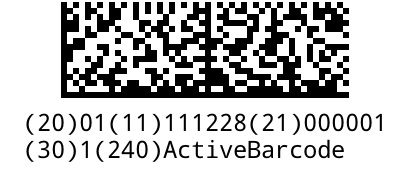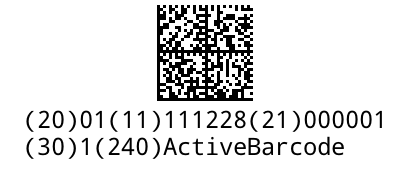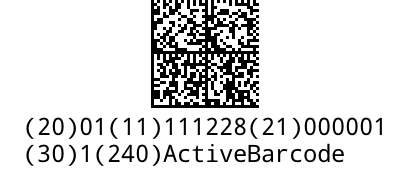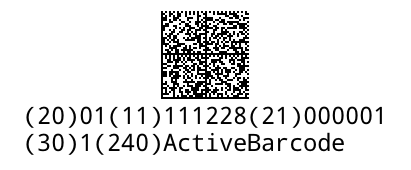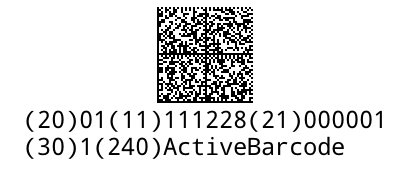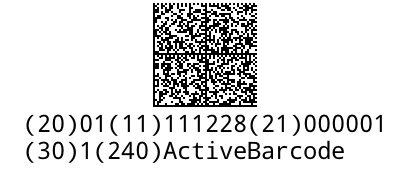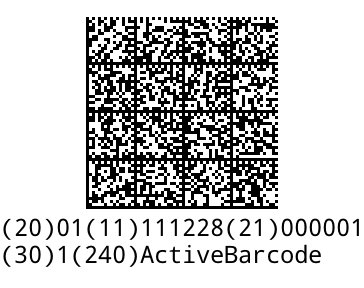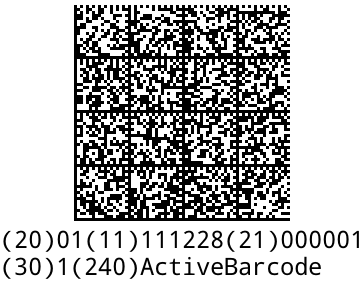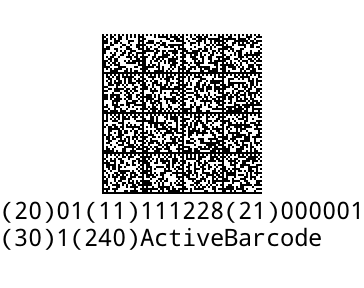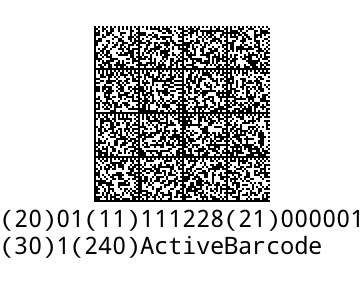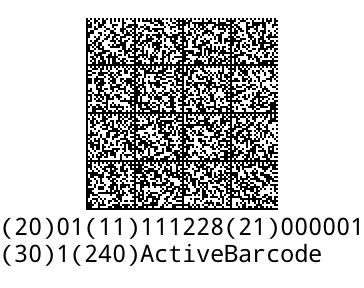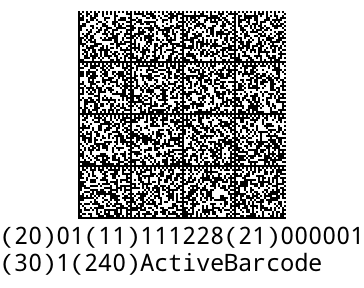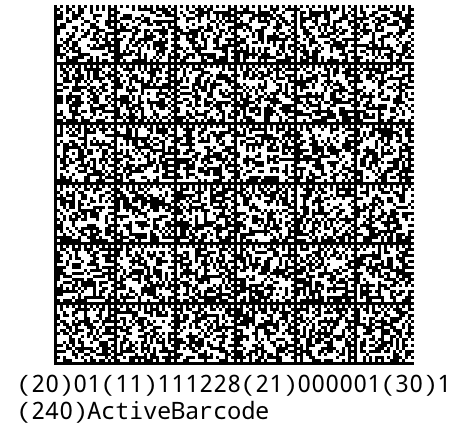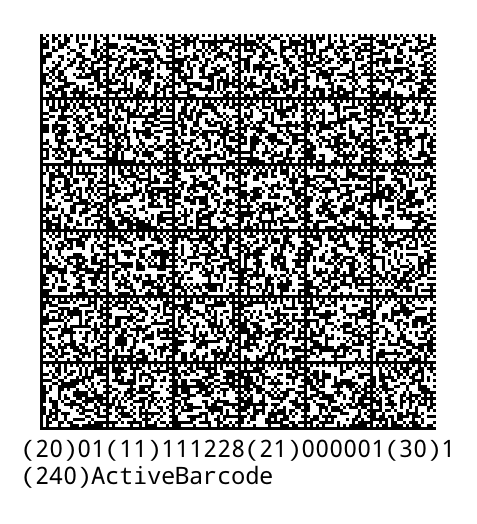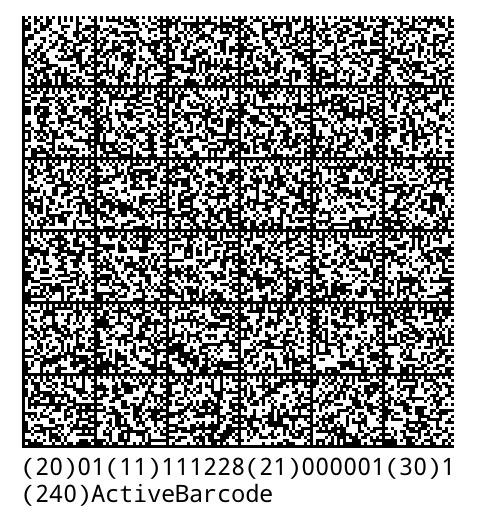Description of GS1-DataMatrix

The GS1-DataMatrix is a specialized variant of the 2D DataMatrix code, primarily used in trade and industry for labeling goods and pallets.
Features of the GS1-DataMatrix
- Special Characters: The GS1-DataMatrix uses the control character FNC1 immediately following the start character. The combination of start character and FNC1 uniquely identifies a GS1-DataMatrix.
- Automatic Generation: When selecting GS1-DataMatrix in ActiveBarcode, the start character and FNC1 are automatically generated.
- Field Separator: The GS1-DataMatrix utilizes the control character
<FNC1>or<GS>to mark the end of fields with variable lenght.
Encoding Multiple Data
A GS1-DataMatrix can encode multiple data points simultaneously, such as a product code (similar to the EAN 13), weight information, or expiration date. This is achieved using internationally standardized Application Identifiers (AI), which specify the type of encoded data.
Example of a GS1-DataMatrix:

The human-readable text, e.g., (01)01234567890128(15)051231, includes:
- (01): Product code (14 digits).
- (15): Expiration date (6 digits, format YYMMDD, here 31.12.05).
The parentheses are for readability only and are not encoded in the barcode.
How to create a GS1-DataMatrix with ActiveBarcode
Enter the human-readable text including the Application Identifiers, e.g., (01)01234567890128(15)051231ActiveBarcode automatically removes the parentheses and generates the correct GS1-DataMatrix, e.g. 010123456789012815051231.
Variable-Length Data
For variable-length data (e.g., quantity or serial number), the control character FNC1 must be inserted before the next AI to indicate the end of the data.
Example:

Human-readable text: (30)19<FNC1>(21)123456789012
- (30): Quantity (here 19, up to 8 digits).
- (21): Serial number (here 123456789012).
The <FNC1> is generated in ActiveBarcode by entering <FNC1>.
Note: If a scanner does not recognize the FNC1, the character <GS> can be used instead, as some scanners incorrectly expect this character.
Further Information
- An overview of all standardized Application Identifiers.
- GS1 DataMatrix Guideline: Overview and technical introduction to the use of GS1 DataMatrix
List of the GS1-DataMatrix symbol sizes, complete with examples.Link
Each of these represents a different symbol size of the GS1-DataMatrix code. The choice determines how much data can be encoded and how large the code will appear.
Larger symbols (e.g., 20x20, 24x24, and up) can store more characters or additional GS1 elements.
If your data content always stays short, then using a smaller symbol is perfectly fine. If you later add more information, you'll need to select a larger version so the data still fits.
The choice partly depends on the amount of data and partly on the available space. The software automatically ensures that whichever size you pick still produces a valid, scannable GS1-DataMatrix.
ActiveBarcode offers three automatic types: AUTO, SQUARE and RECTANGLE. These always select the smallest possible symbol size that can accommodate all your data. SQUARE and RECTANGLE are limited to square and rectangular formats, respectively, while AUTO uses both. If you choose a fixed type such as 64x64, that specific symbol size will be enforced, even if a smaller and more compact code would also work.
Technical data
| Valid characters: | alphanumeric |
| Length: | Variable with no fixed length. |
| Check digit: |
Calculated according to Reed-Solomon-Error correction ActiveBarcode calculates the check digit automatically. |
| Type#: |
DataMatrix - #74 - GS1DATAMATRIX List of all symbol sizes |
